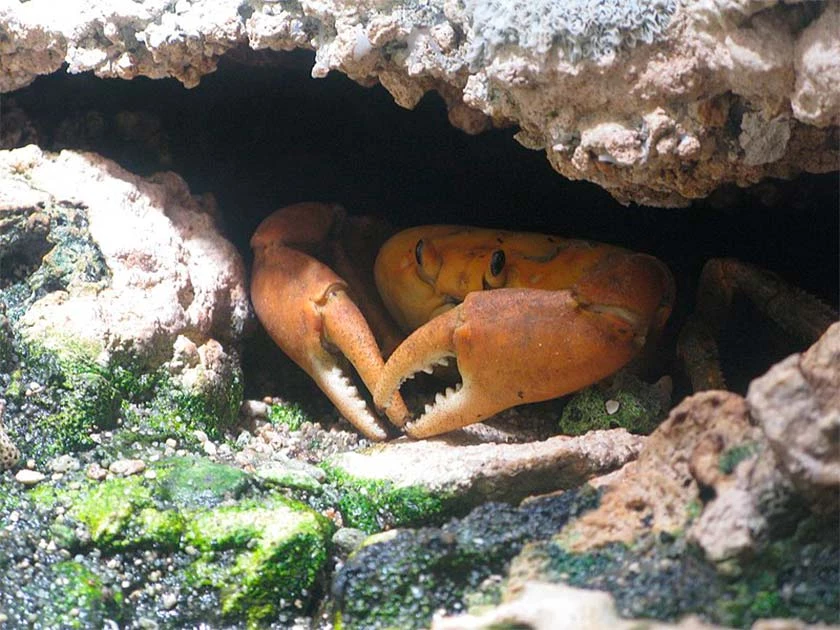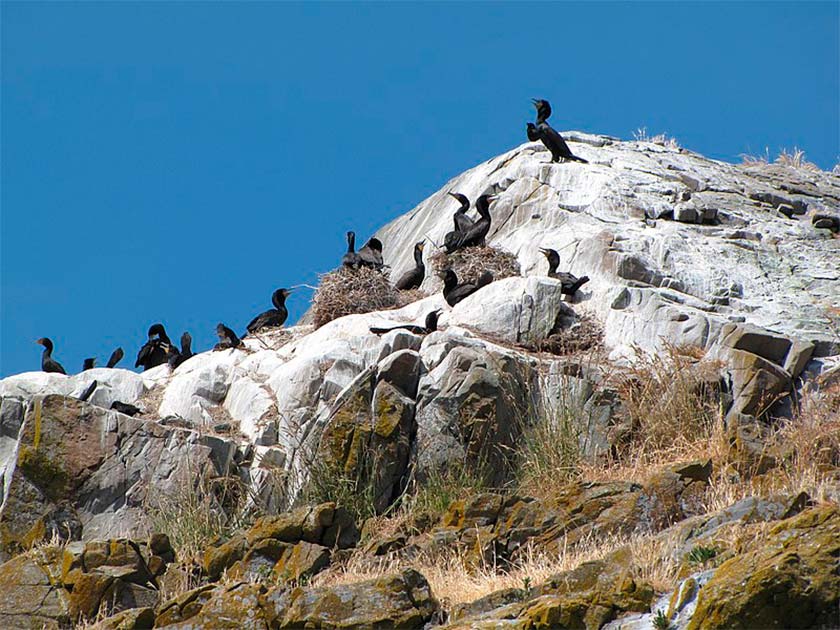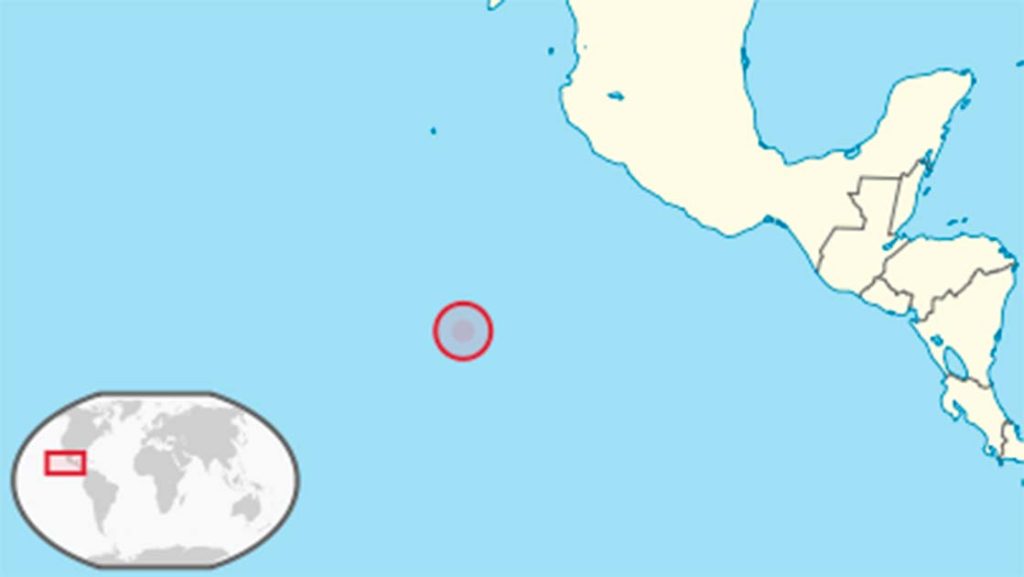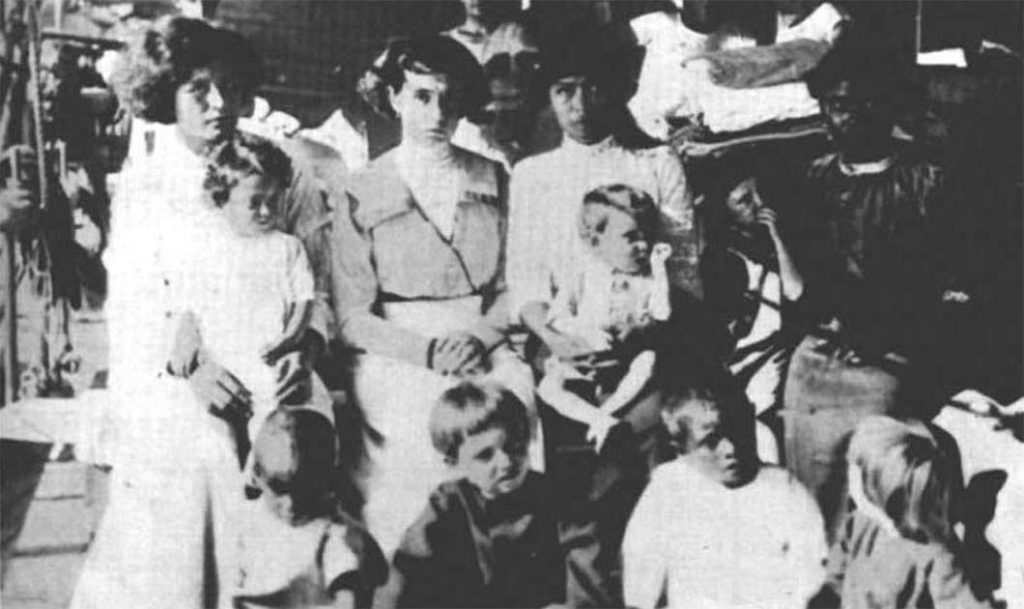Picture this: a remote tropical island with palm trees and a lagoon surrounded by the crystal blue waters of the Pacific Ocean. It sounds like an excellent spot for a relaxing tropical vacation, right?
The truth is, this island, known as Clipperton Island, was far from idyllic or relaxing. While nobody lives on the island now, at the start of the 20th century, 100 men, women, and children were sent to colonize Clipperton Island.
What happened on that small patch of coral in the middle of the ocean is one of the most tragic and harrowing tales that most people have never heard. A brutal series of murders would ensue, led by a tyrannical monster who sought to rule over everyone else.
Who was this “King” of Clipperton Island?
Clipperton Island
If you have never heard of Clipperton Island, you aren’t alone. Clipperton Island is an uninhabited coral atoll located in the eastern Pacific Ocean.
The desolate patch of coral is only 3.4 sq mi (8.9 km2) in size and is located 6,634 mi (10,677km) from Paris, France, 2,900 nautical miles (nmi) (5,400km) from Papeete, Tahiti, and 580 nmi (1,080km) from Mexico. Clipperton Island is a ring-shaped atoll surrounding a stagnant freshwater lagoon and is the only coral island in the eastern Pacific.

The lagoon is devoid of fish, and the lagoon’s water is considered eutrophic. This means the water in the lagoon is heavily enriched in minerals and nutrients like phosphorus and nitrogen; this often leads to thick green algal blooms.
Clipperton Island is often described as a “scab of an island,” While that might sound harsh, it accurately describes this vile heap of coral. The only plants that can grow on this patch of coral are creeping plants and coconut palms.
Bright orange Clipperton Crabs are the island’s primary residents, along with marine birds. Yet, the island has been coveted by the French, the Mexicans, the Americans, and the British for its ideal strategic location for naval warfare and its rich supply of guano that migratory sea birds dump on it every year.
Once the rainy season ends in October, Clipperton Island is said to smell strongly like ammonia from the large amounts of bat, marine bird, and seal excrement that covers the entire atoll. As gross as that is, guano mining was popular in the 1800s.
It is believed that the island was initially discovered in the 1520s by either Spanish conquistador Hernán Cortés or the Portuguese explorer Ferdinand Magellan. Whoever it was left it well alone until it was re-discovered in 1711 by the French, who claimed ownership of the atoll.
In 1825, an American sea captain named Benjamin Morrell made the first recorded landing on the island and reported on the vegetation (or lack thereof). The island was renamed Clipperton Island after the British pirate and privateer John Clipperton.
- The Unknown Kings of Unclaimed Redonda: A Forgotten Lineage?
- Lake Anjikuni: How Did an Entire Village Disappear?
Once Mexico gained independence in 1821, they took possession of the island from Spain. French Emperor Napoleon III annexed Clipperton Island as part of the French colony of Tahiti in 1856.
Then in 1892, the US claimed Clipperton Island under the US Guano Islands Act and began mining the guano on the island in 1895 with a crew of 25 men. At the time, guano was the hot new thing, an incredible fertilizer everyone wanted.

The American miners were evicted from the island in 1897, and Mexico established a military colony and a lighthouse on the island in 1906, taking control officially. Mexican President Porfirio Diaz sent 100 men, women, and children to live on Clipperton Island and assigned Captain Ramon Arnaud as the governor of Clipperton Island.
Arnaud had been a deserter from the army and was sent to Clipperton Island as punishment.
Hell in Paradise
Every two months, a ship with food and supplies would come from Mexico, and the first few months seemed like paradise for the residents of Clipperton Island. Back in Mexico at the time, the country was going through a revolution that lasted from 1910 to 1920, and Clipperton Island was safe and removed from the turmoil in the country.
At some point, the political situation in Mexico became more serious, and the government forgot about their citizens on Clipperton Island. The supply ships, on which the islanders were entirely dependent, stopped arriving.

Captain Arnaud realized that he needed to do whatever he could as the governor to help as many of the other Clipperton Islanders survive for as long as possible on a hunk of coral that could not be cultivated. The small number of coconuts that grew on the island was given to the women and children, one coconut per week.
The islanders had to resort to eating eggs from the sea birds that had created a nest on the island and catching the crabs that ruled the atoll. Fishing was almost impossible because the fish would swim just beyond the island and weren’t close enough to catch in a net.
The people on Clipperton Island began to suffer from diseases like scurvy and rickets due to vitamin deficiencies, and people starved to death. The situation on Clipperton Island only went from bad to worse.
Captain Arnaud claimed to have seen a ship on the horizon, and he and the remaining men alive on the island hopped into a small boat and set out towards the ship. There are two different stories of what happened next.
The first was that as the men paddled towards the ship Captain Arnaud saw, they realized there was no ship. Whether Arnaud hallucinated from malnutrition or was mistaken didn’t matter to the rest of the men in the rowboat. They attacked Arnaud, and the boat capsized; all aboard drowned.
The second story is that the remaining men and Captain Arnaud tried to sail to the ship in the distance, but the breakers of the Pacific were too strong for the weakened men to fight against to clear. The boat crashed into the coral reef, and everyone on board died.
Regardless of the truth, only 15 women and one man, the lighthouse keeper, left on the island after the men failed to return from the sea. As if the universe was testing the strength of the islanders, the tiny scrap of coral was hit by tropical storms, and there was damage to the makeshift structures on the island.
- Nazino: Stalin’s Cannibal Island of Despair
- Who Built the Temples of Malden Island, and Where did they Go?
The King of Clipperton Island
With Arnaud dead the lighthouse keeper, Victoriano Alvarez, declared himself the “King of Clipperton Island,” and life for the survivors on the island only got worse. Alvarez was mentally disturbed and ruled with an iron fist.
In the 19th century, there was a high frequency of madness and suicide amongst lighthouse keepers due to the never-ending solitude and demands of the job. The mad King of Clipperton Island collected all of the weapons on the island, save for one gun for himself, and threw them all into the sea.
He then announced that the women on the island belonged to him and were there to serve him and his needs. Alvarez would rape the women and teenage girls on the island and turn the children into enslaved people to do his bidding.
The women and children were weak, starving, terrified, and were tortured nonstop by the King of Clipperton Island. When someone did not follow his orders, Alvarez would make an example of that person by beating them to death or shooting them with his gun. This brutality lasted for three years.
Things finally came to a head when two of the women on the island, one being Captain Arnaud’s widow Alicia, went to the lighthouse. The King of Clipperton Island had demanded their presence, but when the women arrived they attacked him.
With a hammer and a knife, the women murdered Alvarez and left his remains on shore to be eaten by the crabs. While this victory was a relief to the few survivors on the island, they were still stranded and starving. That was until a miracle occurred.

In 1917, not long after the King of Clipperton Island was defeated, the islanders saw a ship in the distance. Unlike the ship Captain Arnaud claimed to see years ago, this ship was real.
The US Navy gunship Yorktown was patrolling the waters near the island and saw the women and children on an island they thought was uninhabited. The Yorktown’s Commander, H.P. Perrill, demanded a boat head out to rescue the people on Clipperton Island, and Lieutenant R.E. Kerr and several men came to shore to take the emaciated women and children back to the ship.
Alicia Arnaud told the ship’s crew what happened, and they were horrified. Although Lieutenant Kerr wrote the official report of the Clipperton Island rescue, he never mentioned the King of Clipperton Island or his murders.
The men on the Yorktown collected a small fund to give to the survivors to help them start new lives on mainland Mexico, and the actions of the Navy sailors so moved the locals that a large party was thrown for the 11 survivors and the hero sailors. The survivors were rough for wear and looked far older than they were.
Commander Perrill initially believed Alicia Arnaud was in her forties and was in disbelief when he learned she was only 29. The other women survivors were younger than she was. Nine years on a guano-covered island, starving, sick, and tortured, took a significant toll on the survivors.
Top Image: Clipperton Island, where its “King” ruled for three years in utter cruelty. Source: Copernicus Sentinel data 2022 / Attribution.